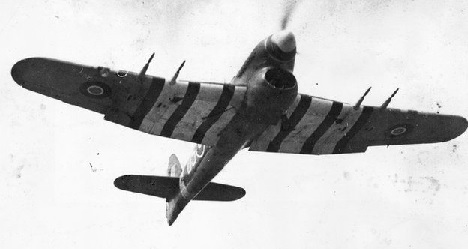
Released Mar 2019
---== UPDATE FL2066: TIFFIES ==---
By: Robert, Grumpy & Bollok
All made possible by: Bcamel (creator of the program used to model the airplanes), and Idunno (who has shared a vast amount of aerodynamical knowledge).
--= Hawker Typhoon Ib's =--
Full rehaul of the Hawker Typhoon Ib 1942 and 1944 flightmodels. See further down for details.
--= Vehicle info =--
The vehicle info has now been updated for all fighters. Which of the P-51D and Fw 190D-9 has the highest top speed? Can a Bf 109E-4 really outturn the Spitfire Mk.II? One can now find performance numbers for top speeds at various altitudes, stall speeds, climb time to 16400 ft, sustained turn rate at sea level, service ceiling etc in the updated vehicle info for all the ww2 fighters. All performance numbers are from meticulous tests of the flightmodels in Warbirds. The vehicle info is accessed from the Tower menu.
--= P-38 Lightning series =--
Manual elevator trim span slightly increased.
--= Macchi series =--
The Macchis had specifically designed uneven left vs right wing spans in order to counter the torque effects. As such the Torque effects for all Macchis have been somewhat reduced.
---== THE HAWKER TYPHOON IB SERIES FULL REHAUL ==---
The Typhoon was nicknamed "Tiffie" by it's pilots. It is probably best known for it's ability of intercepting the Focke Wulf 190. The Napier Sabre IIa was very powerful for an inline engine and required a large air intake for RAM cooling. It was very effective at high speeds but couldn't produce as many horsepowers at low speeds where the air RAM cooling effect was distinctively reduced. An effect of this was that the Typhoon Ib was hampered in the climb, compared to the max power output of the Sabre IIa engine, although it still held quite a decent climb rate. The Hawker Typhoon was a heavy fighter at 11083 lb but the wings were very thick for ww2 standards, just like for the Hawker Hurricane. This allowed it a surprisingly good stall speed and turn rate for it's size. The drawback, just like for the Hurricane, was a higher drag profile which affected the top speed of the Tiffie. It also had a fairly slow roll rate. The high dragco issue became a larger problem as top speeds were increasing as the war progressed, but the Typhoon underwent several drag reducing changes, allowing it a top speed not to far from the fastest fighters of WW2. The Hawker company later produced the Hawker Tempest, which was designed with much thinner wings. The thick robust wings of the Typhoon allowed it to outturn other late war fighters of equal size. The Tiffie had a quite sudden stall though. The Typhoon was also able to carry a heavy payload and excelled as a fighter bomber, especially since it's engine was tooled for low altitudes. A low altitude environment is where the Tiffie is at it's best, and it's pilots should avoid to fight above 20000 ft if possible.
--= The 1942 version =--
The Hawker Typhoon Ib engine was initially restricted to +7 lbs of manifold pressure. At this setting the engine was capable of 2090 hp at 8500 ft, which still was a respectable power output for an inline engine. While the Fw 190A-4 is somewhat faster at WEP, The Focke Wulf can only run at WEP for 3 minutes, while the Tiffie can use +7 lbs boost for 60 minutes, which allows it to eventually run with the Fw 190A-4 while also being the better turn fighter. For a 1942 fighter though the Typhoon's sustained turn rate isn't impressive and the Tiffie pilot will usually do best with boom n' zoom tactics, depending on the opponent.
--= The 1944 version =--
This version of the Typhoon Ib was cleared for using WEP at +9 lbs manifold pressure, which allowed the Napier Sabre IIa engine to produce 2200 hp at 6000 ft. the This alone resulted in an increase of ~11 mph top speed when below 17000 ft. Even more importantly the 1944 version had several drag reducing fixes, like shortened exhaust stacks, that resulted in an additional 18-20 mph increase in top speed. As such the 1944 version is ~30 mph faster than the 1942 version, depending on altitude. These improvements also have a positive effect on the sustained turn rate, giving the later Tiffie version a better power/weight and power/dragco ratio. As such the 1944 model Typhoon can hold a much better sustained turn rate than the 1942 version, and is one of the better turn fighters of the late war era. By 1944 the Typhoon could also be equipped with 2x 1000 lb bombs and 8x RP-3 rockets.

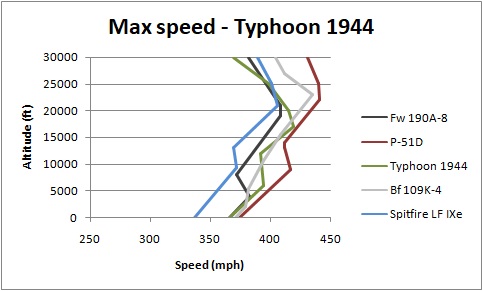
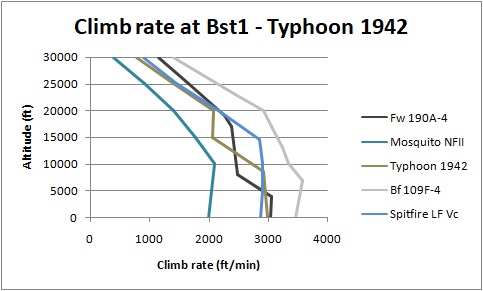
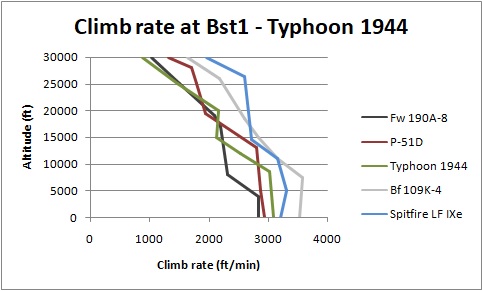
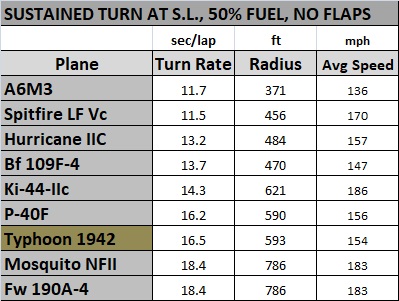
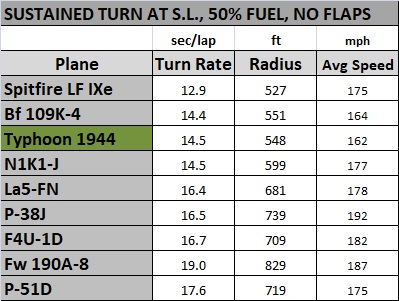
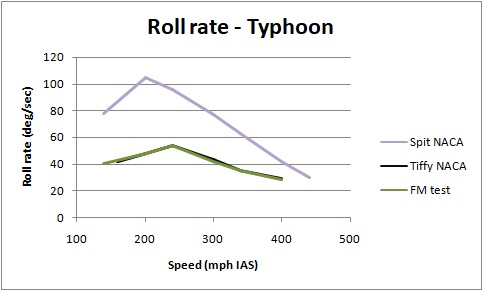
<S>
/Robert